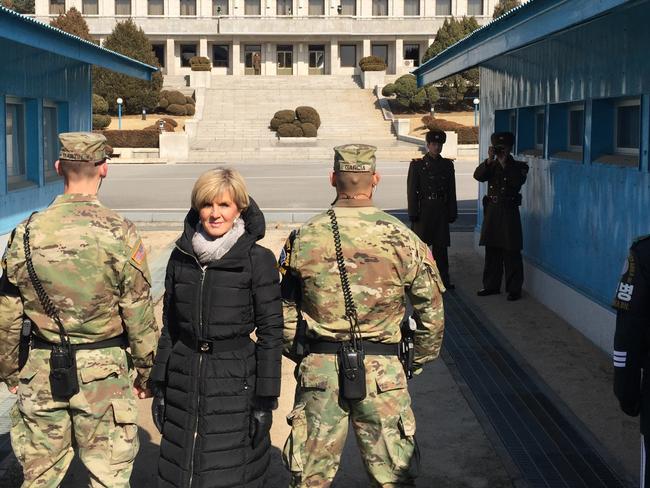North Korea DMZ: What life is really like there
RIVAL soldiers keep watch on each other from the opposite sides of this border, where sudden war is a constant threat.
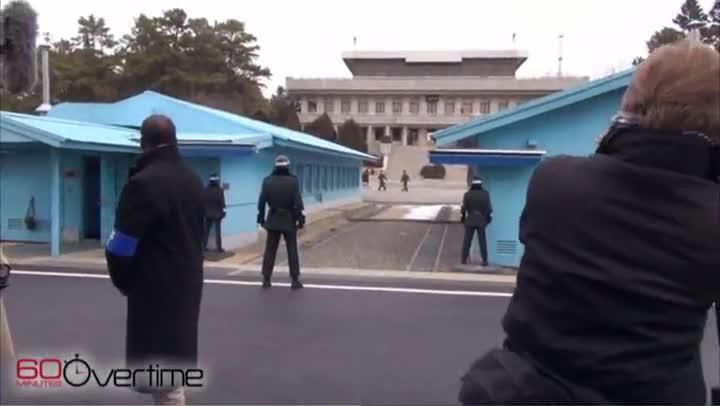
THE soldiers wear dark glasses so their enemies can’t read their expressions.
Some 28,000 US soldiers are stationed here and the threat of war from a hostile enemy remains very real.
Welcome to Asia’s most dangerous front line and a strip of land just 4km wide and 250km long which separates North and South Korea.
Known as the DMZ this is the site where an armistice was signed to end the Korean War in 1953.
Except a peace treaty was never officially signed and the two nations are technically still at war.

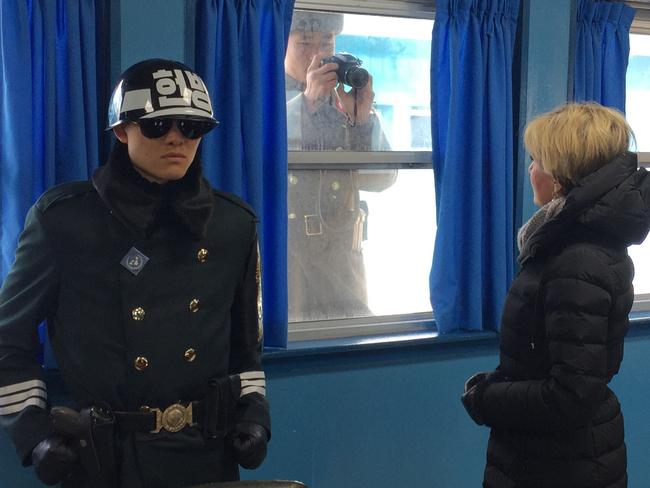
Anyone who visits here must follow a strict set of guidelines and procedures which includes not even making one gesture to North Korean soldiers in the event it is deemed “hostile.”
This is life in one of the most dangerous borders on Earth and is where Australia’s Foreign Minister Julie Bishop visited on Saturday.
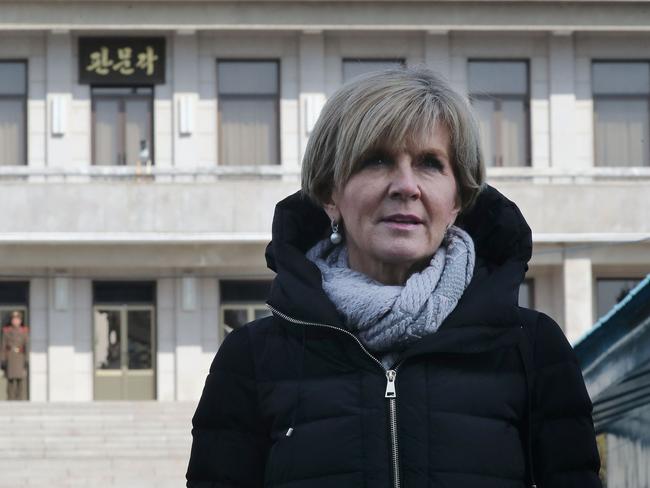
Coming face-to-face with North Korean soldiers, Ms Bishop, toured the demilitarised zone (DMZ) and was inside the T2 building — which sits on the border of both countries when a soldier began taking photos of her.
The Foreign Minister was visiting South Korea as part of a two-day visit to the country where she met with former president Lee Myeong-bak and national security director Kim Kwan-jin to discuss a range of strategic challenges including the threat posed by North Korea.
She later tweeted there was still a dangerous ‘armed truce’ and Australia stood in solidarity with South Korea.
High level of interest in my tour Demilitarised Zone #NorthKorea. After 6 decades still dangerous 'armed truce'. 🇦🇺stands in solidarity 🇰🇷 pic.twitter.com/Yxp12miMnu
— Julie Bishop (@JulieBishopMP) February 18, 2017
Ms Bishop’s visit comes just days after Pyongyang fired a ballistic missile that flew about 500km towards Japan before splashing into the sea east of the Korean peninsula.
The test drew international condemnation with renewed calls for Pyongyang to ends its nuclear program.
Just last December Ms Bishop called on North Korea to abandon its nuclear program and engage with the international community, while supporting a new range of sanctions imposed on Pyongyang over nuclear tests.
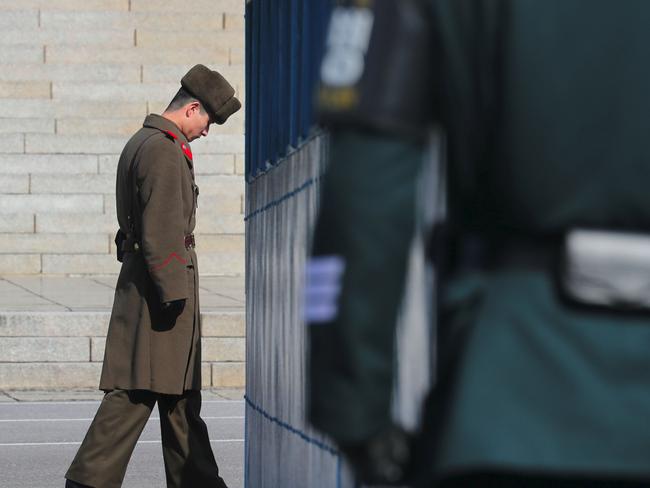
In November 2011, then Foreign Minister Kevin Rudd also visited the zone during a visit to South Korea and just recently characterised the North Korea threat as the most pressing challenge in 2017.
‘WAR WOULD KILL THOUSANDS’
Ms Bishop’s visit comes as two US producers from 60 Minutes Overtime revealed the surreal scene that greeted them when they visited the zone recently.
In a special The North Korean Threat which aired on US TV at the weekend, producers Guy Campanile and Andy Bast, who visited the zone with CBS TV journalist Bill Whitaker, said there were strict rules and procedures in place for anyone visiting the area.
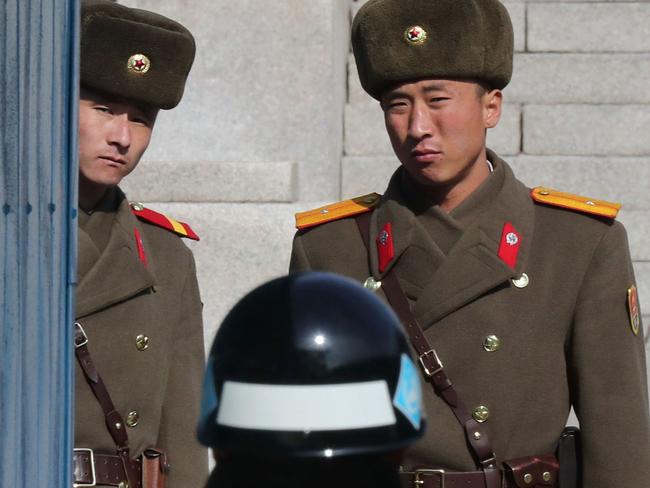
The three visited the zone and saw first-hand the tension between both sides.
Campanile said he has been reading about the DMZ his whole life but going there was a totally different experience which he found “creepy”.
He said there is a hill on the border from which you can see a village full of blue houses and it was like something out of a Hollywood film set with people being bussed in and out as patriotic music played around them.
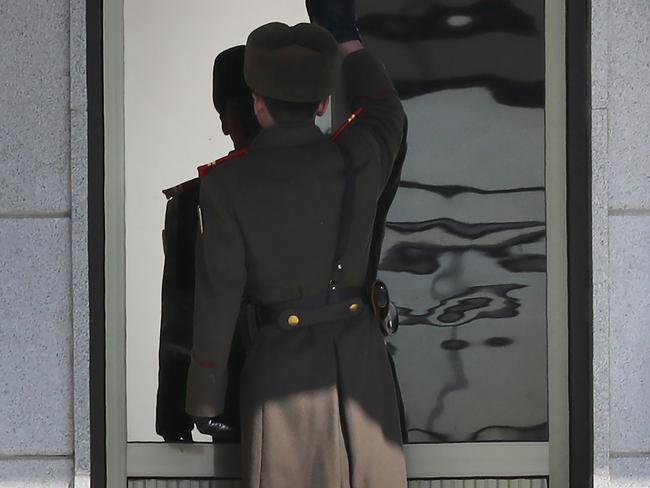
Speaking of visiting the zone, he said there are strict rules in place that people didn’t mess with.
“You’re instructed not to make any kind of gestures that the North Korean soldiers on the other side of the border might deem as hostile.”
When asked what would happen, Campanile said: “Anything can happen that’s the point.”
He said they did draw the attention of North Korean soldiers and were photographed by two of them.
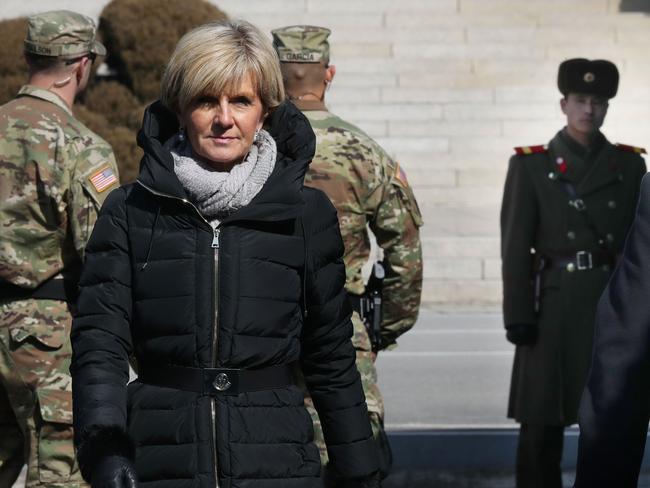
“We were told what they often do is build a dossier on who was there,” he said.
Travelling with Whittaker, Campanile said there would no doubt be a dossier on him in a file cabinet somewhere in Pyongyang.
Bast also revealed how the South Korean soldiers are instructed to wear dark sunglasses so their facial expressions can’t be read by their enemies.
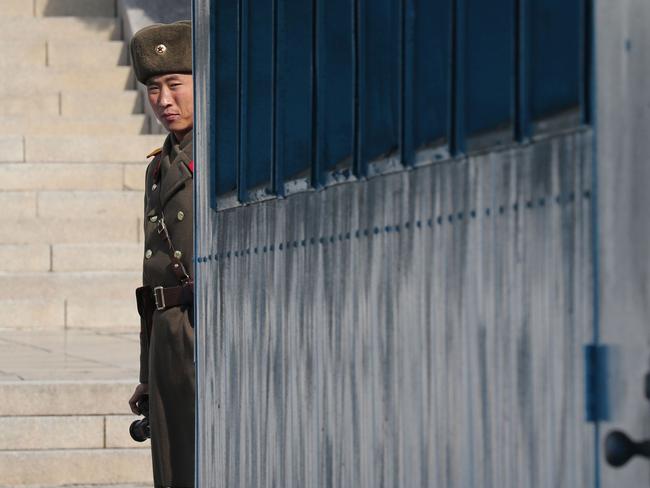
The trio flew to the 10-15 feet above valleys where North Korean military and munitions are while 28,000 soldiers stand along a “trigger line” regarded as one of the most dangerous front lines in Asia, ready to act at the onset of war.
“Korea is a place that’s extremely important for national security,” Campanile said. “If a war broke out thousands of people will be killed.”
He revealed while an armistice was signed in 1953, which officially brought an end the Korean War, it never really ended.
“The Korean War never ended it just stopped,” he said.
